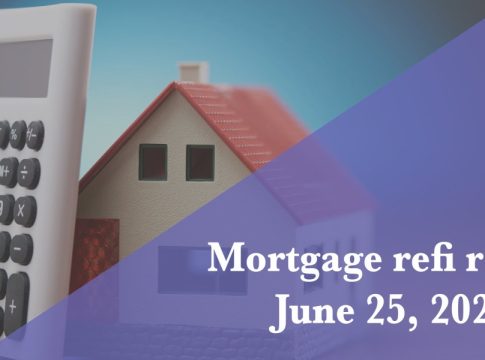Understanding Current Mortgage Refinance Rates
As of June 24, 2023, the average refinancing rate for a 30-year fixed-rate mortgage stands at 6.86%, according to Zillow. For homeowners considering refinancing to secure a lower rate or to tap into home equity, it’s essential to understand the current climate of mortgage rates and what refinancing entails.
What is Mortgage Refinancing?
Mortgage refinancing is the process of replacing your existing home loan with a new one. Just like when you first applied for your mortgage, you’ll need to meet various lender requirements, including your credit score, income verification, and debt-to-income (DTI) ratio.
Tip: Be prepared for a temporary dip in your credit score due to the hard inquiry that comes with refinancing. If you don’t meet the lender’s criteria, there’s always a chance your application could be denied.
The Current State of Mortgage Rates
Recent trends show that mortgage rates haven’t fallen as some predicted, despite cuts to the federal funds rate. Instead, rates have hovered near the 7% mark for several months, with slight decreases observed recently. Many homeowners are reluctant to refinance, especially since 82.8% of those with mortgages currently enjoy rates below 6%.
When Should You Consider Refinancing?
Refinancing isn’t without costs, so it’s crucial to evaluate whether it makes sense for you. A good benchmark is the 1% Rule: consider refinancing if you can obtain a rate that’s at least 1% lower than your existing rate. For instance, moving from a 7% to a 6% rate could be worth the effort.
Here are several common reasons to consider refinancing:
-
Accessing Home Equity: If you need funds, a cash-out refinance allows you to borrow against your home’s equity. Make sure you’ve built up at least 20% equity to qualify.
- Changing Loan Terms: You might want to switch from a 15-year mortgage to a 30-year loan for smaller monthly payments, which could be more manageable based on your current financial situation.
Understanding Refinancing Costs
Refinancing does come with expenses, typically ranging from 2% to 6% of the loan amount. For example, if you’re refinancing a $300,000 mortgage, expect to pay between $6,000 and $18,000 in closing costs. These costs may include:
- Lender origination fees
- Appraisal and title insurance fees
- Loan application fees and survey fees
- Attorney fees, if required
- Prepayment penalties, if they apply to your existing loan
Different Types of Refinancing Options
There are various refinancing options tailored to different needs:
-
Rate-and-term refinance: Ideal when you want to lower your interest rate or modify your loan duration.
-
Cash-out refinance: Borrow a larger amount than your current loan and take the difference in cash.
-
No-closing-cost refinance: The lender covers your closing costs at the expense of a higher interest rate.
- Streamline refinance: Simplified refinancing options for FHA, VA, and USDA loans, often involving less paperwork.
Choosing Between Lenders
You don’t have to stick with your original lender when refinancing. Shopping around for better rates can save you money, but your current lender may offer incentives, such as waived closing costs, to keep your business.
Finally, if your mortgage is backed by Fannie Mae or Freddie Mac, programs like Refi Now and Refi Possible might be available to you, easing the refinancing process.
Navigating the world of refinancing can seem daunting, but understanding your options and current rates equips you to make informed financial decisions.

Writes about personal finance, side hustles, gadgets, and tech innovation.
Bio: Priya specializes in making complex financial and tech topics easy to digest, with experience in fintech and consumer reviews.

